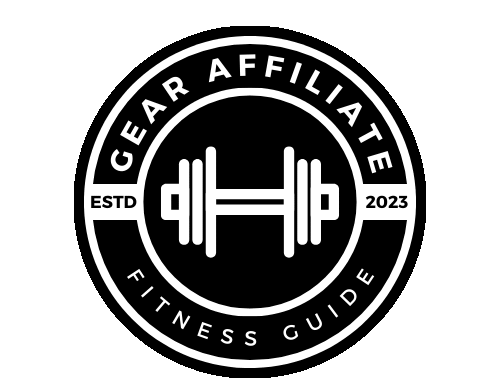
Table of Contents
Introduction: The Importance of Fitness Myths Debunked
In the realm of exercise and nutrition, fitness myths have played a significant role in shaping public perception and influencing individual choices. These misconceptions can lead to ineffective training routines, unhealthy dietary practices, and ultimately hinder progress towards personal fitness goals. It is crucial to distinguish fact from fiction to establish a solid foundation for a healthier lifestyle. Understanding the truth behind these myths empowers individuals to make informed decisions regarding their fitness journeys.
Fitness myths often stem from outdated information, anecdotal evidence, or trends that have persisted despite being disproven by scientific research. For instance, many individuals believe that lifting weights makes women bulky, or that abs can be toned solely through targeted exercises. These clichés not only misguide people but can also discourage them from exploring more effective fitness strategies. By debunking common gym myths, we can foster a more supportive and informed fitness community.
Moreover, misinformation can lead to unhealthy behaviors—such as extreme dieting or overtraining— that can be detrimental to both physical and mental health. A clear understanding of accurate fitness information can prevent individuals from falling prey to dangerous trends, thereby promoting a sustainable approach to health and wellness. Additionally, as society becomes increasingly invested in fitness, dispelling these myths can contribute to better public health outcomes throughout communities.
In this blog post, we aim to clarify these prevalent fitness myths and provide evidence-based insights to help reshape your understanding of exercise and nutrition. By confronting these misconceptions, we hope to encourage a more effective and enjoyable fitness experience for everyone.
Fitness Myth 1: Lifting Weights Will Make You Bulky
One of the most pervasive fitness myths is the belief that lifting weights inevitably leads to a bulky physique. This misconception often deters individuals, particularly women, from engaging in strength training. In reality, the relationship between weightlifting and muscle growth is complex and influenced by several factors, including diet, training intensity, and individual genetics.
Firstly, muscle growth, known as hypertrophy, is influenced significantly by the type of training program one follows. For individuals aiming to increase strength without a bulky appearance, a focus on lower weights and higher repetitions can be beneficial. This training approach encourages muscle endurance and toning rather than substantial muscle mass increases. Additionally, the dietary habits of an individual play a crucial role in determining whether the body will gain significant muscle mass. A diet rich in calories, suitable proteins, and growth-promoting nutrients can facilitate muscle growth, while a balanced diet can help maintain a lean physique.
Moreover, genetics greatly influence how one’s body responds to resistance training. Some people naturally have a predisposition to building muscle more easily than others. This inherent genetic variability means that while weightlifting contributes to muscle development, the extent of this growth varies widely among individuals. For many women, not only do hormones such as testosterone prevent significant bulkiness, but their bodies typically respond well to weightlifting in terms of increased strength and improved body composition without the unwanted bulk.
In conclusion, the notion that lifting weights leads to a bulky physique is a fitness myth that deserves debunking. Instead, for most people, particularly women, embracing a weight training regimen can enhance strength, promote a healthy body composition, and improve overall fitness without leading to unwarranted bulkiness.
Fitness Myth 2: You Need to Work Out Every Day to See Results
Another fitness Myth is the idea that exercising every single day is essential for achieving results in one’s fitness journey. While consistency is undoubtedly important, the notion that daily workouts are necessary can lead to physical exhaustion and burnout. Instead, incorporating rest days and recovery periods into a fitness regimen is crucial for optimal performance and muscle growth. (Check out our post on recovery and rest days below)
The human body requires time to recuperate in order to repair muscles that have been stressed during workouts. This recovery process often leads to increased strength, improved endurance, and overall better fitness results. By engaging in intense exercise without allowing sufficient recovery time, individuals may hinder their progress, leading to plateauing or, even worse, injury. Fitness myths often overlook this important concept, suggesting that only relentless training can yield significant improvement, which is misleading.
Rest days present an opportunity for the body to rebuild muscle fibers, replenish energy stores, and reduce inflammation. The effectiveness of workouts can be drastically improved when the body is adequately rested and ready to perform. Moreover, engaging in activities like stretching, yoga, or light cardio on rest days can enhance recovery, ensuring that the individual remains active without overexerting themselves.
In contrast to the gym myths surrounding daily grueling sessions, research indicates that moderate and consistent workouts interspersed with recovery periods yield superior long-term results. In fact, fitness enthusiasts who focus on intelligent training schedules with rest days often find themselves achieving their goals more effectively and sustainably. Thus, embracing the concept of recovery will not only enhance your fitness journey but also safeguard your well-being in the long run.
Fitness Myth 3: Spot Reduction Helps You Lose Fat in Specific Areas
Fitness myth 3 is a prevalent belief in the fitness community, and is the idea of spot reduction— the notion that performing specific exercises can lead to fat loss in targeted areas of the body. This concept has been perpetuated by various gym myths and weight loss strategies, often leading individuals to focus their efforts on exercises aimed at specific muscle groups, vowing to eliminate fat from those areas. However, this belief is fundamentally flawed and does not align with how the body actually functions regarding fat loss.
Research consistently shows that fat loss occurs uniformly throughout the body rather than in isolated locations. When a person engages in physical activity, the body mobilizes fat stores from all over to fuel the muscles, and these stores are burned off wherever the body deems necessary. Therefore, while exercises targeting certain areas—like crunches for abdominals or leg lifts for thighs—can strengthen and tone those muscles, they do not directly correlate with fat loss in those specific regions. Instead, the emphasis should be placed on overall body fat reduction through a balanced approach involving cardiovascular activity, strength training, and a healthy diet.
To truly achieve fat loss and reshape the body, one must prioritize overall caloric expenditure combined with muscle-building activities. Incorporating a variety of exercises that engage multiple muscle groups, such as compound movements, is significantly more effective in promoting fat loss across the entire body. This comprehensive strategy not only enhances fat loss efforts but also fortifies muscle strength and endurance.
In essence, the myth of spot reduction has been debunked; targeted exercises cannot diminish fat in specific areas. Instead, individuals should focus on holistic fitness strategies that prioritize total body health and fitness. Adopting this approach will not only lead to more effective outcomes but will also encourage a sustainable path toward achieving fitness goals.
Fitness Myth 4: Cardio is the Only Way to Lose Weight
fitness Myth 4 is a common belief that is that cardio exercises are the sole method for effective weight loss. This fitness myth often leads individuals to prioritize long sessions of running, cycling, or swimming, while neglecting other essential aspects of a balanced fitness regimen. However, the reality is far more nuanced; while cardiovascular activity certainly plays a significant role in burning calories, it is not the only component in a successful weight loss strategy. (Check out our post on weight loss here)
Including strength training in your workout routine is vital for achieving sustainable weight loss. When individuals engage in activities such as weight lifting or resistance exercises, they are not only building muscle but also enhancing their overall metabolism. Muscle tissue is more metabolically active than fat tissue; therefore, having more muscle increases the number of calories the body burns, even at rest. This means that strength training contributes to a higher basal metabolic rate, which can significantly aid in weight management.
Moreover, diet also plays a critical role in conjunction with physical activity. A comprehensive weight loss plan should encompass both calorie consumption and expenditure. Focusing solely on cardio may lead to insufficient nutrient intake and muscle loss, undermining long-term goals. It is essential to cultivate healthy dietary habits alongside a varied exercise regimen that emphasizes both cardiovascular fitness and strength training. By integrating both elements—cardio for heart health and calorie burning, alongside strength training for muscle growth and metabolism—the approach becomes more holistic and effective.
In conclusion, while cardio is an important tool for weight loss, it is not the only one. Strength training and proper nutrition are equally crucial components that collectively debunk the myth of relying exclusively on cardio as the means to achieve weight loss results. Embracing a balanced approach will ultimately lead to more effective and sustainable outcomes.
Fitness Myth 5: You Should Stretch Before Every Workout
Fitness Myth 5 involves stretching. Stretching has long been a common practice among fitness enthusiasts, yet the debate continues regarding the most effective way to incorporate stretching into a workout regimen. Often, individuals mistakenly believe that static stretching should precede every workout; however, this notion has been widely debunked. It is critical to understand the distinction between dynamic and static stretching, as each serves a different purpose.
Dynamic stretching involves movements that increase blood flow and prepare the muscles for the activity ahead. These stretches are performed with controlled movements that enhance mobility and activate the muscles specific to the workout. Engaging in dynamic stretching as part of a warm-up routine can significantly improve performance, reduce the likelihood of injury, and prepare the body for the demands of exercise. Research suggests that incorporating dynamic stretches in the pre-workout phase can enhance overall athletic performance and readiness.
On the other hand, static stretching, which involves holding a particular position for a set duration, is best reserved for post-workout routines. This type of stretching aids in muscle recovery by promoting flexibility and reducing muscle tension after exercise. Performing static stretches after workout sessions can help to alleviate soreness and improve the range of motion over time. Thus, recognizing when to use each stretching method is crucial for anyone looking to optimize their fitness routine.
In conclusion, the idea that one should always stretch before a workout is one of the prevalent fitness myths that need to be debunked. By employing dynamic stretching as a warm-up and static stretching as a cool-down, individuals can maximize their performance and enhance their overall fitness journey. Understanding these distinctions contributes significantly to a more effective workout routine and overall health.
Fitness Myth 6: Protein Shakes are Essential for Building Muscle
Fitness Myth 6 is the belief that protein shakes are essential for building muscle mass is one of the prevalent fitness myths that can mislead individuals on their fitness journey. While protein supplements can be a convenient option for some, it is important to understand that they are not an absolute necessity. Muscle growth is primarily influenced by an individual’s overall dietary patterns combined with consistent strength training.
A well-balanced diet containing adequate protein sources, such as lean meats, fish, eggs, dairy, legumes, and nuts, can effectively meet the protein needs for muscle repair and growth. The key factor lies in the total daily protein intake rather than the specific source from which it is derived. Many athletes and bodybuilders achieve their muscle-building goals through whole food sources, emphasizing the importance of nutrient-dense meals over relying solely on protein shakes.
Moreover, protein shakes can be high in sugar and additives, which may not be conducive to long-term health when consumed in excess. People looking to build muscle should focus on consuming a variety of whole foods to not only achieve their protein requirements but also to obtain other essential nutrients that support overall health. In many cases, incorporating a diverse range of foods can contribute more to one’s fitness endeavors than a singular focus on protein drinks.
It is also noteworthy that everyone’s protein needs can vary significantly based on factors such as age, sex, body composition, and activity level. Consulting with a nutritionist or a registered dietitian can provide personalized insights into dietary requirements and help dispel the common gym myths surrounding protein intake. Ultimately, while protein shakes can be helpful for some, they should not be viewed as a requisite for muscle growth. Through education and understanding, individuals can better navigate these fitness myths and make informed choices.
Fitness Myth 7: More Sweat Equals a Better Workout
Fitness Myth 7 is the belief that sweating profusely during a workout signifies greater effort or a more effective session. Many individuals equate sweat with calories burned and consequently the success of their fitness regimen. However, this correlation between sweat volume and workout efficacy is misleading and needs to be addressed. Sweating is primarily the body’s mechanism for regulating temperature. When the core temperature rises during physical activity, the body produces sweat to facilitate cooling through evaporation. Thus, an increased volume of sweat does not necessarily indicate higher intensity or better overall workout results.
Various factors influence the amount one sweats, including genetics, environmental conditions, hydration levels, and the individual’s fitness level. For example, athletes often sweat more profusely as their bodies adapt to efficiently manage temperature through acclimatization. This means that a seasoned gym-goer may sweat more than a beginner, yet their workout effectiveness may not differ significantly. Additionally, workouts performed in a hotter environment can lead to increased sweating without an actual elevation in workout intensity. Therefore, measuring the effectiveness of a workout solely by sweat production is a flawed approach and reinforces a common gym myth.
Instead of focusing on how much you sweat, consider other indicators of a workout’s success, such as improvements in strength, endurance, and overall physical health. Monitoring heart rate, energy levels, and recovery times are far more accurate measures of workout efficacy than simply looking at sweat levels. Separating fact from fitness myths helps individuals maintain a healthier perspective on their workouts, ensuring that they set realistic goals based on comprehensive assessments rather than surface-level observations. In conclusion, the amount of sweat produced does not equal a better workout; understanding this can lead to a more focused and effective fitness routine.
Conclusion
In conclusion, recognizing and understanding the various fitness myths that pervade our culture is vital for making informed health decisions. Throughout this blog post, we have explored some of the most prevalent misconceptions about fitness, emphasizing the importance of debunking these myths to cultivate a healthier approach to exercise and well-being. It is essential to rely on evidence-based information rather than hearsay or popular beliefs, which can often be misleading.
Many individuals may subscribe to beliefs such as the idea that lifting weights will inherently make someone bulky or that specific exercises can target fat loss in certain areas of the body. These gym myths can hinder progress and may even lead to frustration and injuries. By challenging these misconceptions, one can adopt a more balanced fitness strategy, focusing on overall health rather than transient ideals driven by societal pressures.
Moreover, educating oneself about the science of fitness allows individuals to make better choices catered to their unique body types and fitness goals. This informed perspective not only enhances physical results but also promotes mental well-being, creating a positive relationship with exercise. As fitness enthusiasts, it is our responsibility to question these common beliefs, fostering a community that prioritizes health and well-being over misleading fitness myths.
Ultimately, embracing accurate information empowers individuals to navigate their fitness journeys with confidence. To achieve optimal results, it is necessary to separate fact from fiction, ensuring that personal fitness practices are based on sound science rather than outdated or incorrect information. Let us continue to encourage a culture of inquiry and knowledge within the realm of fitness, ensuring that all individuals have access to the truth.
If you found this post to be helpful, then you may be interested in the rest of our blog page here.
At Gear Affiliate, we always want to give our readers more resources to research. Below are a few sources that we have found to be helpful relating to this topic.


